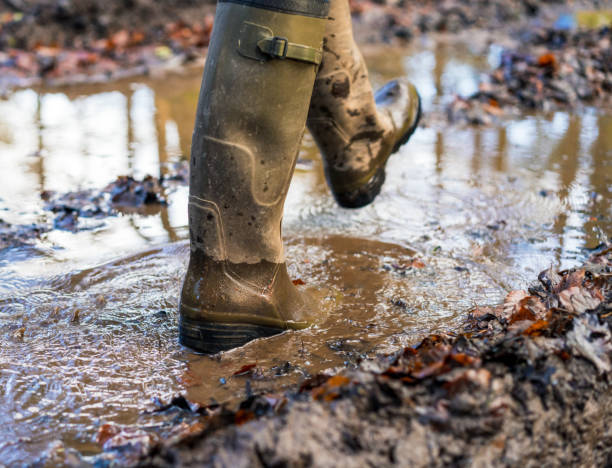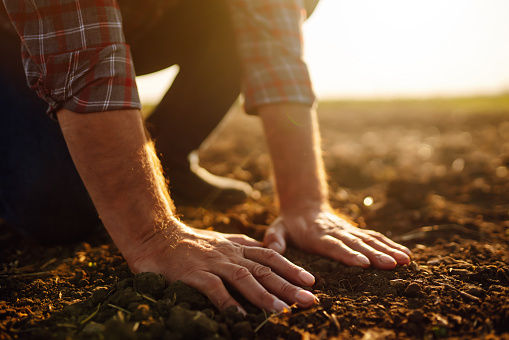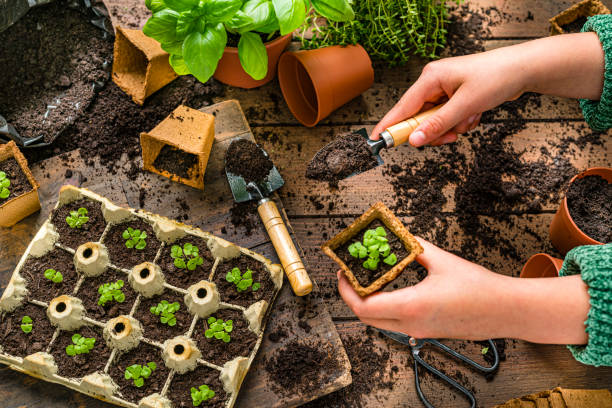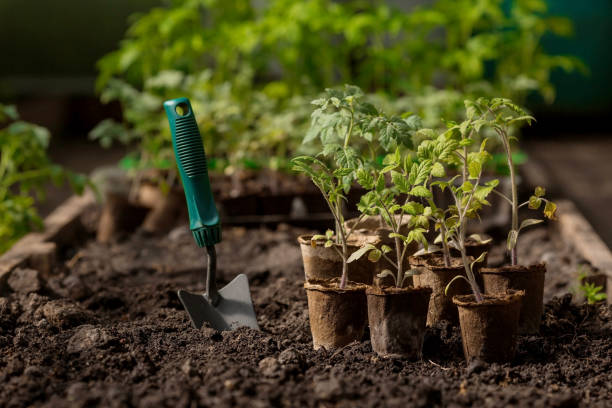A Gardener's Early Spring
"Mud, flood, blossoms, and babies signal the arrival of spring..." is an excellent way to anticipate and welcome the start of every gardener's favorite season.

Quote and info adapted from one of my favorite sources, The Backyard Homestead Seasonal Planner: What To Do & When To Do It by Ann Larkin Hansen.
Spring Soil
Soil temperature is measured with a soil thermometer at a depth of 3-4 inches.
In early spring, soil thaws and warms through the season to 40 degrees F / 4 degrees C and higher.
In mid-spring, soil temperatures reach 60 degrees F / 10 degrees and continue to warm through the season. This is when corn field is planted.
In late-spring, soil temperatures reach 60 degrees F / 10 degrees C and warm through the season.
(Hansen, 3).

To Do List for the Garden
1. plant peas and cold-tolerant crops as soon as the soil softens
2. spread compost and necessary amendments when the soil firms up; see more on my favorite compost on this post!
3. till as soon as the soil dries and is firm enough to work
- if you're interested in the no-till approach, here are some resources to check out:
- Daniel Mays, The No-Till Organic Vegetable Farm: How to Start and Run a Profitable Market
Garden That Builds Health in Soil, Crops, and Communities.
4. Start more seeds inside for your mid- and late- spring plantings
(Hansen, 42).

Order of Planting
Planting times differ not only because of heat and cold tolerance, but also because of varied times to sprout, grow, and mature.
Vegetables and herbs that need a long growing season and don't tolerate cold should be started indoors; those that like cooler conditions and mature rapidly cam be planted directly in the garden as soon as the soil is warm enough for that type of seed.
Basic planting schedule is built around average date of last frost. Vary it according to package directions. Type in your zip code here to determine your last frost date - Almanac. Mine is approximately April 27th.
Planting Schedule
Slow to sprout: parsley, leeks, onions from seed - these should be started inside 15-20 weeks before last frost date
Very hardy: peas, lettuce, crucifers (or plant midsummer for fall harvest), spinach, parsnip, spring small grains - start indoors 10-14 weeks before last frost; transplant to the garden 7-9 weeks before last frost; sow directly in garden as soon as soil is thawed and you can use a mini hoop house or cold frame
Moderate hardy: potatoes, leeks, onion sets, root crops (or plant midsummer for fall harvest), field corn - plant 4-6 weeks before last frost. ** I am at 5 weeks out and have my potatoes in already. I will add more this week.
Tender: tomatoes, peppers, sweet corn, tender herbs, beans, squash and melons - start indoors 4-6 weeks before last frost; transplant to garden after last frost; or sow directly after last frost and after soil is warm.
(Hansen, 44).

To Do List for Spring Chicks
1. set up the brooder and get the temperature right several days before your new chicks arrive or hatch

2. purchase chick starter feed and chick sized grit
- for starter feed, you can choose between medicated and non-medicated
3. purchase heat lamp and bulbs, feeders, and waterers
- If you have a broody girl hatching the chicks, there are some other things you can take into account. Check out these for more info:
- From candling eggs to hatching chicks
* New chicks need a secure, draft-free brooder with a constant temperature, clean water, fine grit, and starter feed.
* The heat source should be a lamp if they do not have a mama, but I use one even with a mama.
* I add rocks to the water system to ensure they don't drown in the first couple of weeks.
Here is my broody mama sitting on her batch of eggs. She started sitting this week, so hopefully in a couple weeks, we'll have some new little additions.
For more information on homesteading topics such as orchards, bee yards, barns, woodlots, and wildlife habitats, check out The Backyard Homestead Seasonal Planner: What To Do & When To Do It by Ann Larkin Hansen.
Check back soon for more information on chicken breeds, egg colors, poultry life cycles, and more.
Please send any questions or topics you'd like to see in future posts!

No comments:
Post a Comment